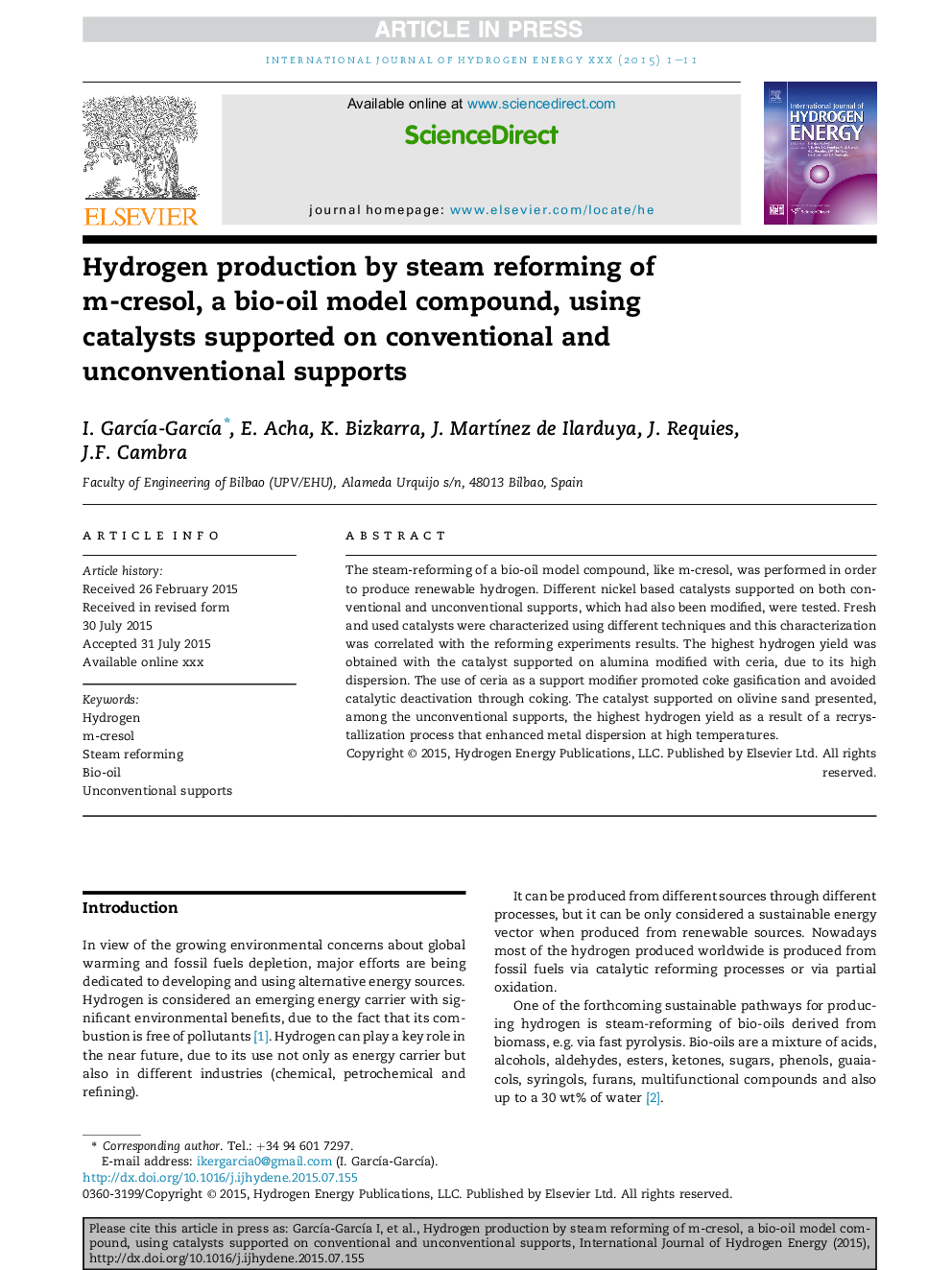| Article ID | Journal | Published Year | Pages | File Type |
|---|---|---|---|---|
| 7713798 | International Journal of Hydrogen Energy | 2015 | 11 Pages |
Abstract
The steam-reforming of a bio-oil model compound, like m-cresol, was performed in order to produce renewable hydrogen. Different nickel based catalysts supported on both conventional and unconventional supports, which had also been modified, were tested. Fresh and used catalysts were characterized using different techniques and this characterization was correlated with the reforming experiments results. The highest hydrogen yield was obtained with the catalyst supported on alumina modified with ceria, due to its high dispersion. The use of ceria as a support modifier promoted coke gasification and avoided catalytic deactivation through coking. The catalyst supported on olivine sand presented, among the unconventional supports, the highest hydrogen yield as a result of a recrystallization process that enhanced metal dispersion at high temperatures.
Related Topics
Physical Sciences and Engineering
Chemistry
Electrochemistry
Authors
I. GarcÃa-GarcÃa, E. Acha, K. Bizkarra, J. MartÃnez de Ilarduya, J. Requies, J.F. Cambra,
